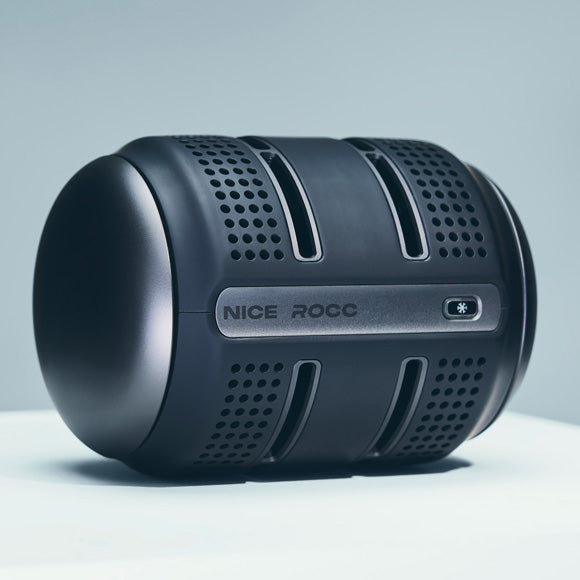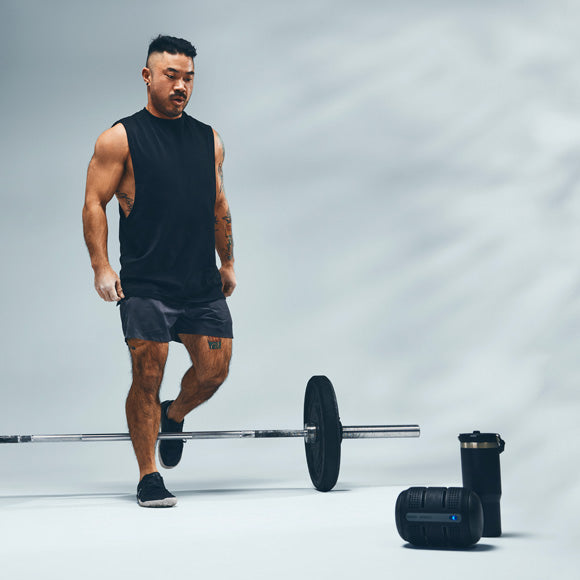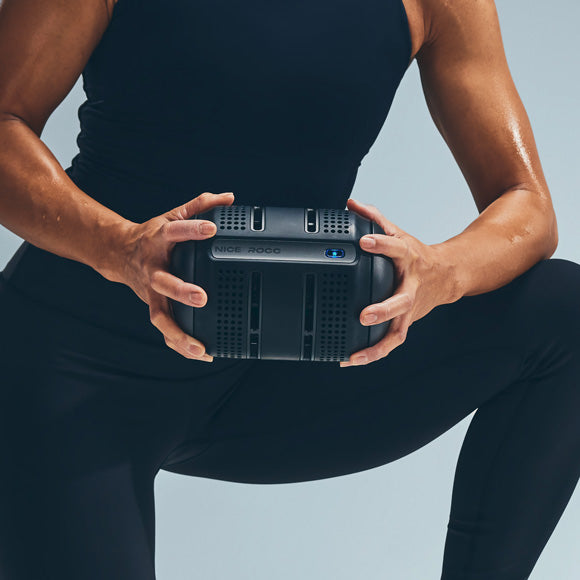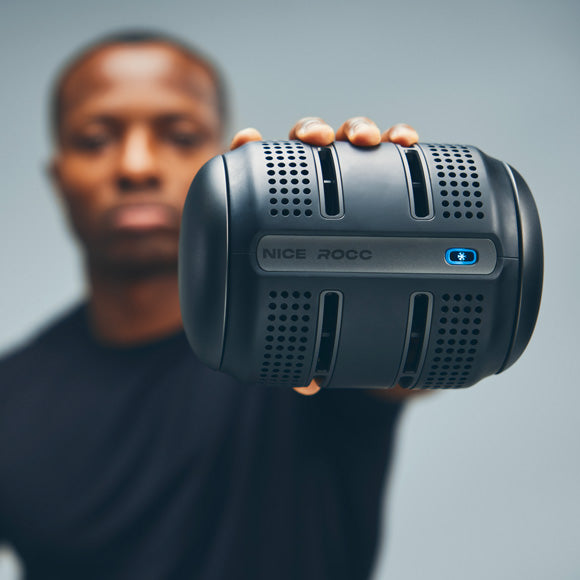Strength training progress is not always a straight path. Many lifters experience periods where improvements slow down or stop altogether, known as plateaus. These stalls often happen because heat buildup in your body limits performance long before your muscles or motivation give out.
Recent research shows a surprisingly simple, science-backed way to push past these limits: cooling your palms between sets. By reducing core body temperature, palm cooling allows you to lift heavier, get stronger, and recover faster without drugs or complicated equipment.
Why Heat Limits Your Strength Gains
When you train intensely, your body’s core temperature rises. This is not just about feeling hot. Elevated temperature affects nearly every system tied to performance.
-
Muscle contractions: Heat impairs calcium handling in muscle fibers, limiting the force each contraction can produce.
-
Energy use: As temperature rises, the body burns through adenosine triphosphate (ATP) more quickly, accelerating fatigue.
-
Central nervous system: Elevated heat signals the brain to reduce output as a protective mechanism, making you feel exhausted even if your muscles still have energy.
Studies have found that even moderate increases in core temperature can reduce work capacity. In one controlled experiment, elevated core temperature led to a 17% drop in bench press work volume compared to cooler conditions. This loss compounds over time, reducing training stimulus and slowing progress.
By actively cooling the body during rest periods, you can restore performance, maintain higher work output, and create the conditions for greater long-term gains.
Palm Cooling: The Science Behind the Method
Palm cooling targets specialized blood vessels in the hands called arteriovenous anastomoses (AVAs). These vessels act like radiators for the body, quickly exchanging heat between blood and the environment.
By applying controlled cooling at the palm, blood is chilled before circulating back through the body, which lowers core temperature efficiently without causing shivering or shock.
Researchers have found that by cooling the palms to about 15–16°C under a slight vacuum, core temperature can be reduced quickly without discomfort.
In resistance training studies:
-
Bench press: Palm cooling between sets prevented the 17% work volume drop caused by heat buildup.
-
Pull-ups: Experienced athletes increased work volume by 144% with cooling compared to just 4% without.
-
Strength gains: In a 10-week program, athletes gained 22% more 1RM strength after 6 weeks of palm cooling, with results on par with anabolic steroids in similar protocols.
How Palm Cooling Helps You Lift Heavier, Get Stronger
1. Delays Fatigue
Cooling your palms between sets reduces heat stress on your nervous and muscular systems. This lets you sustain higher effort levels across more sets, preventing the early onset of fatigue.
2. Increases Work Volume
More total reps and weight moved per session means greater training stimulus. Since work volume is one of the strongest predictors of hypertrophy and strength, palm cooling directly amplifies training effectiveness.
3. Accelerates Strength Gains
When fatigue is controlled, athletes can push closer to their true capacity. This higher-quality training translates into faster improvements in maximal strength and more noticeable progress in the gym.
4. Supports Recovery
Temperature management reduces strain on the cardiovascular and endocrine systems. Athletes often find they feel fresher from set to set and recover more fully between training days.
5. Helps Maintain Consistency
Plateaus are often caused not by lack of effort, but by limitations in recovery and performance. Palm cooling provides an edge that helps lifters stay consistent over months of training.
Practical Applications for Different Athletes
The benefits of palm cooling extend well beyond the lab. Different types of athletes can use this method to unlock performance in ways tailored to their goals.
-
Strength Athletes (Powerlifters, Bodybuilders)
Palm cooling helps maintain higher training volumes in compound lifts like squats, bench press, and deadlifts. This supports hypertrophy for bodybuilders and improved 1RM capacity for strength-focused lifters.
-
Endurance Athletes (Runners, Cyclists, Rowers)
Core temperature is often the biggest limiter in endurance performance. Hand cooling during rest periods or intervals helps athletes sustain pace, reduce perceived exertion, and extend time to exhaustion.
-
Mixed-Sport Athletes (CrossFit, Combat Sports, Team Sports)
Sports requiring both power and endurance benefit from reduced fatigue between efforts. Palm cooling helps athletes transition more effectively from explosive strength movements to conditioning work.
-
Everyday Lifters
Recreational gym-goers also benefit. By reducing fatigue, palm cooling makes it easier to add an extra set, achieve more reps, or recover faster between sessions, leading to steady, sustainable progress.
How to Integrate Palm Cooling into Your Training
Palm cooling is most effective when used strategically during workouts.
-
Warm up as usual to prepare muscles and joints.
-
Train your main lift or exercise to near fatigue so the cooling has a meaningful effect.
-
Apply palm cooling immediately after your set, resting your palms on the cooled surface for 90-120 seconds.
-
Repeat for each set in your core exercises.
-
Record your performance in a training log. Over time, you should notice more reps, heavier loads, and faster recovery.
Best Practices
-
Use palm cooling during your heaviest or most demanding exercises for maximum benefit.
-
Hydrate during cooling breaks since hydration and temperature control complement each other.
-
Be consistent. The greatest strength gains appear when palm cooling is used across multiple weeks of training.
Common Mistakes to Avoid
-
Skipping cooling on some sets but not others, which reduces the cumulative benefit.
-
Cooling for too short a time (less than 1 minute), which does not allow sufficient heat transfer.
-
Treating it as a substitute for smart programming or recovery habits. Palm cooling enhances results but cannot fix poor training design.
FAQ
Q: Is palm cooling safe?
A: Yes. Research shows palm cooling is safe for healthy individuals. As with any new training method, consult your doctor if you have circulatory or cardiovascular conditions. The process uses mild cooling, not ice or extreme temperatures.
Q: How long should I cool my palms between sets?
A: Most studies use 90-120 seconds per rest period. This is enough to meaningfully lower core temperature without extending rest too long.
Q: Can palm cooling help with endurance training?
A: Absolutely. Studies on cycling and running show that hand cooling during exercise in the heat improves time to exhaustion and reduces perceived exertion. Endurance athletes use it to maintain output in hot environments.
Q: Do I need a vacuum-assisted device like in research?
A: Vacuum-assisted cooling optimizes heat transfer, but modern devices like the NICE ROCC are designed to deliver similar results in a more convenient form. This makes palm cooling practical for gym and home training.
Q: Will palm cooling help if I am already in a cool gym?
A: Yes. Even in an air-conditioned space, muscle and core temperature rise significantly during heavy lifting. Palm cooling provides benefits regardless of the environment.
Q: Can palm cooling replace rest days?
A: No. Palm cooling enhances recovery and performance within sessions, but athletes still need proper rest days, nutrition, and sleep for long-term progress. Think of it as a tool to maximize training, not a replacement for recovery basics.
Break Through Your Strength Plateau
If you have been training hard but not seeing results, the problem might not be your program. It could be heat buildup limiting your output. Palm cooling offers a proven way to lift heavier, get stronger, and keep progressing without risky supplements or overtraining.
Take control of your training results with the NICE ROCC, the palm cooling solution trusted by athletes to break limits and achieve their goals.
External References
-
Grahn DA, et al. “Cooling the palm between sets improves resistance training performance.” Journal of Strength and Conditioning Research, 2012.
-
Armstrong LE. “Hydration, thermoregulation, and exercise performance.” Nutrition Reviews, 2021.
-
Hsu AR, et al. “Effect of hand cooling on repeated cycle sprints in the heat.” European Journal of Applied Physiology, 2015.





